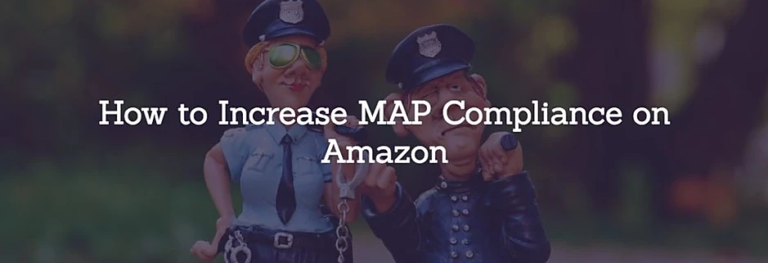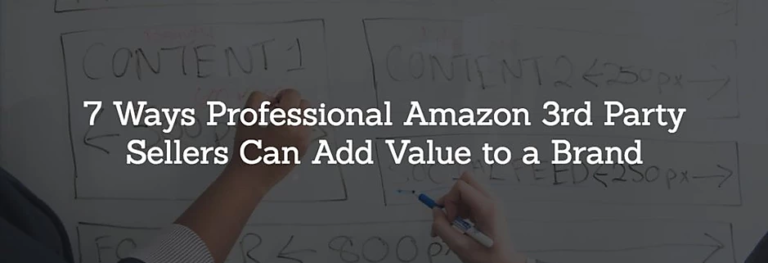Resources
Relevant Information and Actionable Takeaways

“You have manipulated product reviews on our site. This is against our policies. As a result, you may no longer sell on Amazon.com, and your listings have been removed from our site.”
Last August, Zac Plansky woke to find that the rifle scopes he was selling on Amazon had received 16 five-star reviews overnight. Usually, that would be a good thing, but the reviews were strange. The scope would normally get a single review a day, and many of these referred to a different scope, as if they’d been cut and pasted from elsewhere. “I didn’t know what was going on, whether it was a glitch or whether somebody was trying to mess with us,” Plansky says.
As a precaution, he reported the reviews to Amazon. Most of them vanished days later — problem solved — and Plansky reimmersed himself in the work of running a six-employee, multimillion-dollar weapons accessory business on Amazon. Then, two weeks later, the trap sprang. “You have manipulated product reviews on our site,” an email from Amazon read. “This is against our policies. As a result, you may no longer sell on Amazon.com, and your listings have been removed from our site.”
Source:Prime and Punishment
A rival had framed Plansky for buying five-star reviews, a high crime in the world of Amazon. The funds in his account were immediately frozen, and his listings were shut down. Getting his store back would take him on a surreal weeks-long journey through Amazon’s bureaucracy, one that began with the click of a button at the bottom of his suspension message that read “appeal decision.”

A quick search online and on any Amazon seller forum will reveal countless stories of Amazon account suspensions. Amazon Terms of Service are long and not always intuitive, and reasons for suspension range from the obvious (e.g., horrible customer service, multiple products sold that don’t match the Amazon listings) to the obscure.
For instance, consider the story of the seller – let’s call him Chris – who had excellent seller metrics but ended up hiring a longtime friend to help with his flourishing Amazon business. This friend had previously had her own seller account, but thought she had closed it 2 or 3 years back. However, as soon as Chris granted his friend access to his seller account (using her personal email address that apparently was still linked to her old seller account), Amazon suspended both accounts.
Chris was able to appeal Amazon’s decision, and eventually able to reopen his seller account… 40 days later.
40 days. That’s a long time to be without what for most eCommerce brands is a significant portion of their revenue.
What would it mean to you to be without your Amazon sales for 40 days?
How much revenue would you lose over the 40 days?
Chris was a smaller seller, but big enough to work his business full time and pay himself from the profits.
And account suspensions aren’t limited to smaller sellers – in 2017, one of the top 10 third-party sellers in the US had to deal with account suspension.
The downsides of having one seller on your product(s) aren’t limited to the loss of revenue due to a potential account suspension.
How are Sellers Vulnerable?
As has been described here, the number of dirty tricks available to bad actors on the Amazon platform – and their use of them – has steadily increased over the last year.
Just because your brand hasn’t yet been the victim of these tactics is no reason to believe that that will not change in the future.
Here are just a few ways that sellers are vulnerable:
Seller Buys Competitor’s Products
A seller buys his competitors’ items over and over and continually reports the item to Amazon as defective or counterfeit. Eventually, Amazon places restrictions on the sellers account and demands supplier invoices. Amazon takes a long time to verify the invoices (or they can’t verify them at all) and the seller is out of commission for weeks.
Seller Buys Fake Reviews For Competitor’s Products
A seller hires a company to leave a huge volume of positive reviews on their competitors’ listings. Amazon then goes after the innocent competitor for fraudulent reviews.
Competitor Hijacks Your Product Listings
A brand has a competitor literally copy their products, take over their own listings for themselves (hijacking), and then claim to Amazon that THEY have the real, legitimate listing. Some have gone as far as to register another company’s trademark as their own in Brand Registry and then do takedowns of the true rights owner.
False Complaints of Dangerous Products
An electronic product seller has a competitor that buys a product from them and then claims to Amazon that it caught on fire. Some of them have astonishing pictures of the product burning as if it was lit with gasoline. Amazon is very quick to kill listings for safety concerns. The innocent seller then has to show proof of certification from independent third-party testing labs to get reinstated – an expensive and time-consuming proposition.
The Vendor Central Hack
A bad actor with a Vendor Central account changes a competitor’s listing to create bad buyer experiences. Sometimes they change the dimensions or weight of the product so suddenly the seller is paying oversize fees on a small box and losing all of their margin on a product. Other times they change the product picture or description so that the buyer is unhappy when they get their purchase. When a change is made through Vendor Central, Amazon considers it a “retail contribution” and it is really hard to get them to fix the listing.
Competitor Uploads Obscene Photos to Your Listings
A recent client had a bad actor that was uploading obscene and vulgar pictures to all of his listings over and over again. He’d get it fixed with Amazon and within a few hours the horrible pictures were back. These were all through normal flat file uploads to the Amazon platform. Amazon couldn’t catch the bad actor because these were all stealth accounts and the bad actor used a different stealth account every time they uploaded. There was no point in blocking a seller account in other words. Buyers were literally screaming at the brand (IN ALL CAPS!!!) in the product reviews. The brand’s listings plummeted in the organic search results. Do you think Amazon will remove these bad reviews when the problem is fixed? Of course not. They never remove product reviews if they are from legitimate buyers. The damage is done and will keep on killing those listings.
Further Reading
From the WSJ: Amazon Fires Employee for Sharing Customer Emails
From Forbes: The New Black Hat Tactics Amazon Sellers Are Using To Take Out Their Competition
From Webretailer: Are Black Hat Sellers Winning the Battle on the Amazon Marketplace?
What is the Business Impact?
Should your brand fall victim to any of the dirty tricks mentioned above, your brand will experience any or all of the following:
Loss of Revenue Due to No Amazon Sales
This is the obvious one, and is discussed above. Getting your account reinstated can occasionally be a quick process, but usually takes days or weeks, and in some cases accounts are permanently closed.
Amazon’s judgments are so severe that its own rules have become the ultimate weapon in the constant warfare of Marketplace. Sellers devise all manner of intricate schemes to frame their rivals, as Plansky experienced. They impersonate, copy, deceive, threaten, sabotage, and even bribe Amazon employees for information on their competitors. Source:Prime and Punishment
Loss of Revenue Due to Drop in BSR
If your account is suspended, you’re automatically out of stock of certain products. This leads not only to loss of revenue in the short term, but can lead to a significant drop in Best Seller Rank (BSR).
Even once you’re back in stock, this lower BSR can in turn lead to lower sales, generating a negative feedback loop that can be difficult to break.
You may end up having to spend a significant sum on Pay Per Click (PPC) to raise your BSR back to where it was – assuming you even can!
Plansky’s Jeff letter was never answered, but after he’d sent it, a fellow Amazon seller at a local meet-up gave him the name of someone “high up” in the company. He emailed them, and shortly afterward, he got his account back. (Stine maintains that it was the Jeff letter that did it.) All told, he estimates his suspension cost him about $150,000 in sales. Source:Prime and Punishment
Loss of Revenue Due to Amazon product reviews being hidden
If your account is suspended, your Amazon listings will automatically be removed from a browsing customers visibility.
When customers go into your brick and mortar partner store locations and see your products, what is one of the first things they do?
They pull out their phone and search for your product on Amazon to see it’s reviews.
If Amazon customers are browsing for a product to buy like yours, they will be unable to see your product listings and reviews on Amazon.
Their purchasing decision will likely be swayed.
This not only has a huge impact on you, but also your brick and mortar partners. Your Amazon presence is intimately connected to your brick and mortar sales revenue.
“55% of all consumers turn to Amazon first when searching for products.”
Source: Bloomreach
Additional Benefits of Having Two Sellers
There is no reason to have 3, 5, 10 or more sellers of your products on Amazon. In fact, the more sellers you have, the more problems you will have; however, there are some very good reasons to have two sellers.
Inventory Management

Each seller will want to maintain stock no matter how many sellers are on a listing, but if there is only one seller, it’s crucial that that seller remains in stock – otherwise, you will have again a loss of revenue due to a drop in BSR (see above).
A second seller significantly buffers against the risk of running out of stock, even if there is a small issue on the supply end.
To guarantee your products stay in stock even as sales fluctuate, the single seller will need to maintain a much higher level of safety stock. This leads to additional cash invested in excess inventory as well as higher storage fees (and in 2017 Amazon raised 4th quarter storage fees drastically, so this isn’t insignificant).
Over the following days, Harris came to realize that someone had been targeting him for almost a year, preparing an intricate trap. While he had trademarked his watch and registered his brand, Dead End Survival, with Amazon, Harris hadn’t trademarked the name of his Amazon seller account, SharpSurvival. So the interloper did just that, submitting to the patent office as evidence that he owned the goods a photo taken from Harris’ Amazon listings, including one of Harris’ own hands lighting a fire using the clasp of his survival watch. The hijacker then took that trademark to Amazon and registered it, giving him the power to kick Harris off his own listings and commandeer his name.
Source:Prime and Punishment
In-House Expertise
When the single Amazon seller is the brand themselves versus a dedicated Amazon seller, the brand needs to – in one way or another – attain the expertise in selling on the Amazon platform, either by training, hiring internally, or hiring a consultant.
- Who is the Amazon listing expert?
- The Amazon PPC expert?
- Who will stay current on Amazon Terms of Service?
The cost of this internal expertise is often underestimated by brands who don’t consider the true cost of hiring, training, and payroll burden. There’s also the issue of being back at square one if the brand loses their internal expertise – which you inevitably will at some point because people don’t stay with one company for long these days.
Smart brands focus on what they excel at and outsource what they don’t.
Now, it’s also worth noting that there are many benefits to having limited sellers of your products.
JC Hewitt, whose law firm frequently works with Amazon sellers, calls the system’s mandatory guilty pleas, arbitrary verdicts, and obscure language “a Kafkaesque bureaucracy with bad writing.” Inscrutable rulings emerge as if from a black box. The Performance team, which handles suspensions, has no phone number; there’s no one to ask for clarification. The only way to interact with them is by filing an appeal, and when it’s rejected, sellers often have no idea why. Sellers can call another Amazon department, Seller Support, but those workers can’t provide information about the Performance team and can offer only generic advice about what the seller might have done wrong.
Source:Prime and Punishment
Benefits of Having Two Sellers on Your Amazon Listings
If your brand relies on 3rd party sellers to sell your products on Amazon, it’s critical to understand how the number of sellers on any given product listing will impact sales, pricing, customer service, and brand equity in general.
Generally speaking, the larger the number of sellers, the less control your brand will have over pricing, content, promotions, advertising, and customer service.
Brands who limit the number sellers on their Amazon listings have made a wise move in many respects.
With limited sellers:
- Pricing control on the Amazon marketplace is simpler
- It is easier to control the content (images, text) on the Amazon listing
- The brand doesn’t have to work with numerous sellers to coordinate consistent promotions
- The brand can be represented with a consistent level of customer service
All of the above are even easier with only one seller, but are all very manageable when the brand sells alongside one or two responsive brand partners.
The Performance workers’ incentives favor rejection. They must process approximately one claim every four minutes, and reinstating someone who later gets suspended again counts against them, according to McCabe and others. When they fall behind, Stine says, they’ll often “punt” by sending requests for more information, as Harmon experienced.
Source:Prime and Punishment
Is It Worth the Risk?
In the end, the decision whether to have a single Amazon seller – or act as your own Amazon seller – is up to you.
If you have a single 3rd party seller on your listing, there is really no benefit. If you’re acting as your own seller, there can be a benefit in terms of profit – assuming, of course, you don’t get your account suspended.
Only you can answer the question, is it worth the risk?Scammers have effectively weaponized Amazon’s anti-counterfeiting program. Attacks have become so widespread that they’ve even pulled in the US Patent and Trademark Office, which recently posted a warning that people were making unauthorized changes through its electronic filing system, likely “part of a scheme to register the marks of others on third-party ‘brand registries.’”
Scammers had begun swapping out the email addresses on their rival’s trademark files, which can be done without a password, and using the new email to register their competitor’s brand with Amazon, gaining control of their listings. As Harris encountered, Amazon appears not to check whether a listing belongs to a brand already enrolled in brand registry. Stine has a client who had trademarked their party supply brand and registered it with Amazon, only to have a rival change their trademark file, register with Amazon, and hijack their listing for socks, which had things like “If you can read this, bring coffee” written on the soles. There are more subtle methods of sabotage as well. Sellers will sometimes buy Google ads for their competitors for unrelated products — say, a dog food ad linking to a shampoo listing — so that Amazon’s algorithm sees the rate of clicks converting to sales drop and automatically demotes their product. They will go on the black market and purchase or rent seller accounts with special editing privileges and use them to change the color or description of their rival’s products so they get suspended for too many customers complaining about the item being “not as described.” They will exile their competitor’s listings to an unrelated category — say, move a product with a “Best Seller” badge in the office category to lawn care, taking the badge for themselves.
Source:Prime and Punishment
We Can Help
At etailRx, we have proven experience helping brands mitigate the single seller risk. In addition, we provide Amazon expertise – we’ll optimize listings and provide PPC services, and there’s no charge for those services. To speak with one of our etailRx strategists, call 908-249-0020.



